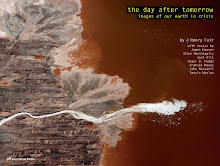Among my working artist friends runs a common joke about the hardships of a career that forces one to sleep late, while away most of the morning drinking coffee and complaining about galleries, then spend a few hours attending to the mundane business of life, only to reconvene over some libations and resume the discussions. But in actual fact, the life of the artist is a burden: one works long hours for minimal remuneration in pursuit of some nebulous vision. Most of the time is spent alone, testing that definition of insanity which says the sane would not repeatedly try the same thing and expect a different result. And there is the humiliation of constantly needing to sell yourself. The only reason to be an artist is if you can't do something else.
Some few are lucky enough to get their reward monetarily, but for most the recompense comes from seeing others enjoy the fruits of the artist's frustrations.An artist works with a chosen medium to express his or her vision, a process that usually involves a struggle between imperfect materials and over-exacting specification. And that is when the variables are within reach and controllable to some degree. To arrange an exhibit in a remote location, collaborating with an unfamiliar team, using unknown materials, can be an arduous process. In this situation, one can only pray to be lucky enough that the new team comprises exacting professionals, and the standardization of processes in the modern world will lead to an unexpected good result.Such was the case with a recent exhibit in Bolzano Italy, and it was a great pleasure to finally travel there, meet the team, and see the result.But the greatest reward was to see visitors, especially children, enjoying, and really contemplating the work. One of the most interesting aspects of the visual arts, perhaps more than any other form, is the Rorschach Effect: each visitor will take away something different. These pictures are about pollution, and straddle a line between abstract and literal, and even with captions that identify the subject, every viewer brings different preconceptions and opinions that will shape his or her impression. Thus children are the most interesting audience for me, and it was a great reward to see so many and that they were so captivated by the work.The other great reward was meeting the team that produced and assembled the exhibit at the Museum Südtirol. So many thanks to Massimo and Vito for the great work.
---
Please check out my current exhibit: Abstraction of Consumption: A Dream of Plenty
24 September 2014
The Real Reward
Labels:
art,
artist,
bolzano,
exhibit,
gallery,
museum,
photographer,
rorschach,
starving artist,
sudtirol
Subscribe to:
Posts (Atom)














